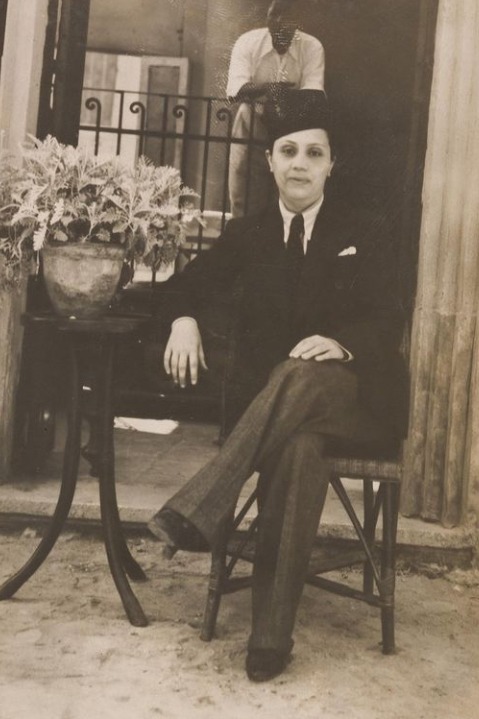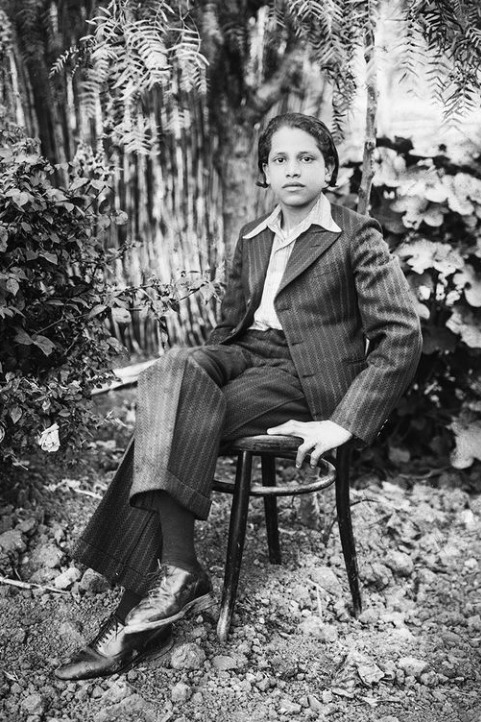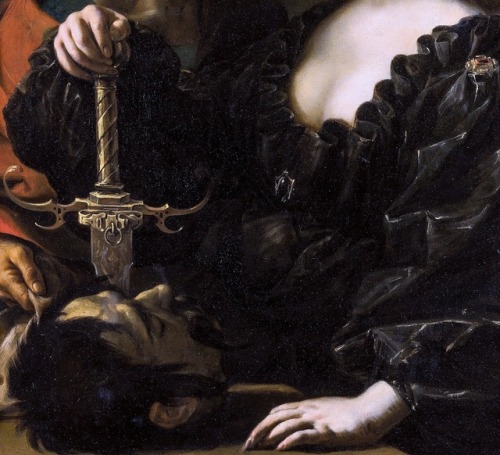
103 posts
Latest Posts by ro0hafz4 - Page 2
To all my hoes and nerds out there: what are the best sources for Orphic myth? (@judiejodia?)
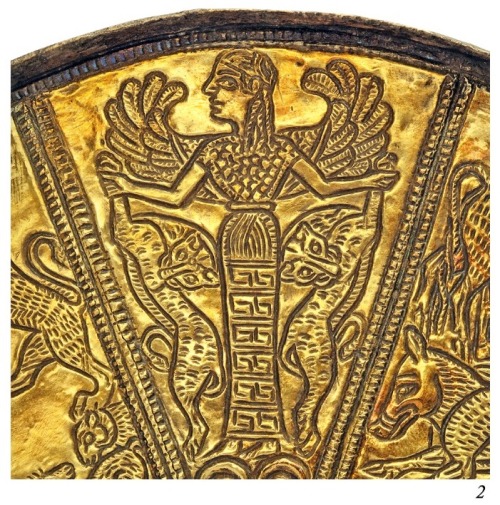
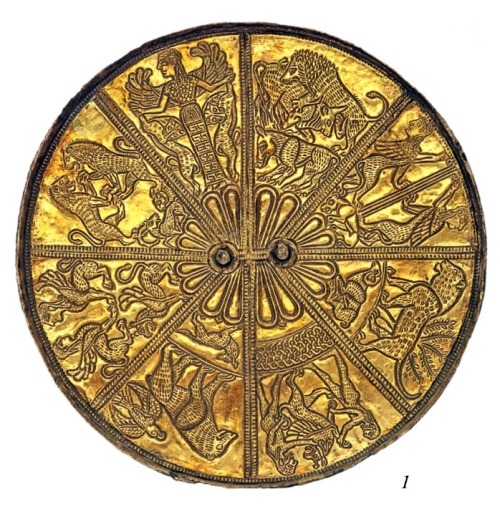
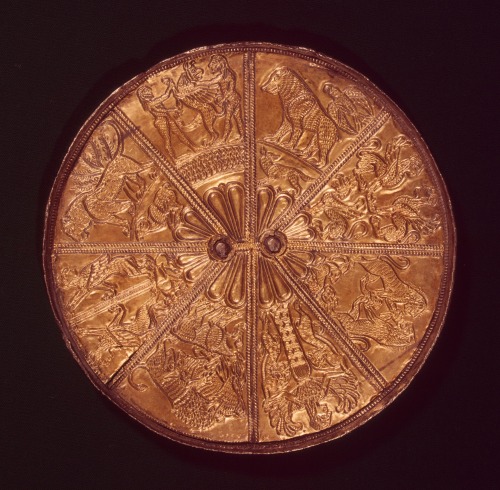
Mirror with Scythian mistress of the animals, Griffins, Sphinxes, animals, and Arimaspians 7th C. BCE. This may have association with the Scythian deity Artimpasa, as she could be associated with animals, though the Potnia Theron figure has usually been associated with Artemis, from what I've seen. From the Kelermess Barrow. Hermitage Museum.
"Among these, the Tauri have the following customs; all ship-wrecked men, and any Greeks whom they take in their sea‑raiding, they sacrifice to the Virgin Goddess (Artemis) as I will show: after the first rites of sacrifice, they smite the victim on the head with a club; according to some, they then throw down the body from the cliff whereon their temple stands, and impale the head; others agree with this as to the head, but say that the body is buried, not thrown down from the cliff. This deity to whom they sacrifice is said by the Tauri themselves to be Agamemnon's daughter Iphigenia. As for the enemies whom they overcome, each man cuts off his enemy's head and carries it away to his house, where he impales it on a tall pole and sets it standing high above the dwelling, above the smoke-vent for the most part. These heads, they say, are set aloft to guard the whole house. The Tauri live by plundering and war."
-Herodotus, The Histories, Book 4.103

Statuette of alabaster standing nude goddess, from Babylon, circa first century B.C.-first century A.D. (with movable arms, and ruby eyes and navel).CreditVincent Tullo for The New York Times


The Colour of Pomegranates, 1969
As I am reading an aggregation notebook about fairytales, I am reminded of another reason for why there is this change from “folklorist” to “literary” studies of fairytales recently.
As you might know, the “folkloric” studies of fairytales led to typification, classification, catalogues - the famous Aarne-Thompson classification. We identified the “families” of fairytales, the common points they shared, the ingredients of the recipes, the pieces of the puzzle placed together ; we’ve got lists of archetypal characters and the typical scenarios and routines. And don’t get me wrong, this is really good and cool - through this we were able to identify the “untold rules” of fairytales, and the unofficial canons of the genre, and better highlight the unusual or brilliant variations…
But there is a slight problem with those studies. Their “break-down” method might start out or end as a catalogue, but it passes by a system of “molds”, if I dare say so. Basically, to forge types, to classify, to make lists and divided categories, they enforce the stories into a mold, into general archetypes, into “typical behaviors”… And this is where people see things differently nowadays.
The example I can bring forward is how the folklorist studies usually consider an archetype of the story to be the “aggressor”. You know, the typical fairytale villain. And this folklorist approach will often end up basing their categorization on “What does the aggressor does? How does the hero encounters the aggressor? Is the aggressor killed or robbed?”. But who is the aggressor? Anyone and nobody. In the “aggressor” position, they treat the very same way dragons and evil stepmothers, ogres and wicked fairies, witches and lustful kings, greedy knights and devious dwarves. These are all just “costumes”, for some folklorist, placed on an archetypal “fairytale aggressor”, and these “costumes” are just ornaments that are only a secondary, if not tertiary matter.
But… what the “literary studies” are bringing forth nowadays is the question: “Wait… Maybe it does matter. Maybe who or what the aggressor is does matter. Maybe we shouldn’t treat the same way stories that are about dragons and those about evil witches. Maybe there is a reason why the storyteller prefers to talk about a greedy abusive mother rather than an ogre deep in the woods. And the literary studies precisely ask those questions because - unlike the folklorist studies which mostly see fairytales as ancestral plans and outlines, traditional schemas and structure, cultural frameworks and fabrics, the literary studies try to consider the fairytales more as stories first. Stories told by a certain person, in front of a certain audience, crafted a certain way for a certain time and era.
This is why, while the folklorist studies tend to discard or disregard the “little details” as not so important (because they are searching for the bone structure or “primordial core” of the story), the literary studies rather focus on these details - because it is those details that make the story. The little twists and turns that each storyteller adds to the formula, the specific additions of a man or woman’s own mind and culture. For a folklorist study, it doesn’t matter if the key is made out of gold or bronze - or even if it is a key at all, it might be a magical egg as long as it has to be found by the protagonist to open a magical door. But to the literary study, the implications of changing the key from gold to bronze will be questioned, and having an egg instead of a key will be a BIG deal.
I don’t know if what I said is clear, but I just wanted to point it out. (With such a big topic as this whole literary VS folklorist debate, one needs to pile up the little crumbs over each other until they make a big pile, because that’s literaly centuries of scholarship, studies and popular culture reception at war here)
Persephone the Wanderer (I)
by Louise Glück
In the first version, Persephone is taken from her mother and the goddess of the earth punishes the earth—this is consistent with what we know of human behavior,
that human beings take profound satisfaction in doing harm, particularly unconscious harm:
we may call this negative creation.
Persephone’s initial sojourn in hell continues to be pawed over by scholars who dispute the sensations of the virgin:
did she cooperate in her rape, or was she drugged, violated against her will, as happens so often now to modern girls.
As is well known, the return of the beloved does not correct the loss of the beloved: Persephone
returns home stained with red juice like a character in Hawthorne—
I am not certain I will keep this word: is earth “home” to Persephone? Is she at home, conceivably, in the bed of the god? Is she at home nowhere? Is she a born wanderer, in other words an existential replica of her own mother, less hamstrung by ideas of causality?
You are allowed to like no one, you know. The characters are not people. They are aspects of a dilemma or conflict.
Three parts: just as the soul is divided, ego, superego, id. Likewise
the three levels of the known world, a kind of diagram that separates heaven from earth from hell.
You must ask yourself: where is it snowing?
White of forgetfulness, of desecration—
It is snowing on earth; the cold wind says
Persephone is having sex in hell. Unlike the rest of us, she doesn’t know what winter is, only that she is what causes it.
She is lying in the bed of Hades. What is in her mind? Is she afraid? Has something blotted out the idea of mind?
She does know the earth is run by mothers, this much is certain. She also knows she is not what is called a girl any longer. Regarding incarceration, she believes
she has been a prisoner since she has been a daughter.
The terrible reunions in store for her will take up the rest of her life. When the passion for expiation is chronic, fierce, you do not choose the way you live. You do not live; you are not allowed to die.
You drift between earth and death which seem, finally, strangely alike. Scholars tell us
that there is no point in knowing what you want when the forces contending over you could kill you.
White of forgetfulness, white of safety—
They say there is a rift in the human soul which was not constructed to belong entirely to life. Earth
asks us to deny this rift, a threat disguised as suggestion— as we have seen in the tale of Persephone which should be read
as an argument between the mother and the lover— the daughter is just meat.
When death confronts her, she has never seen the meadow without the daisies. Suddenly she is no longer singing her maidenly songs about her mother’s beauty and fecundity. Where the rift is, the break is.
Song of the earth, song of the mythic vision of eternal life—
My soul shattered with the strain of trying to belong to earth—
What will you do, when it is your turn in the field with the god?
Persephone the Wanderer (II)
by Louise Glück
In the second version, Persephone is dead. She dies, her mother grieves– problems of sexuality need not trouble us here. Compulsively, in grief, Demeter circles the earth. We don’t expect to know what Persephone is doing. She is dead, the dead are mysteries. We have here a mother and a cipher: this is accurate to the experience of the mother as she looks into the infant’s face. She thinks: I remember when you didn’t exist. The infant is puzzled: later, the child’s opinion is she has always existed, just as her mother had always existed in her present form. Her mother is like a figure at a bus stop, an audience for the bus’s arrival. Before that, she was the bus, a temporary home or convenience. Persephone, protected, stares out of the window of the chariot. What does she see? A morning in early spring, in April. Now her whole life is beginning–unfortunately, it’s going to be a short life. She’s going to know, really, only two adults: death and her mother. But two is twice what her mother has: her mother has one child, a daughter. As a god, she could have had a thousand children. We begin to see here the deep violence of the earth whose hostility suggests she has no wish to continue as a source of life. And why is this hypothesis never discussed? Because it is not in the story; it only creates the story. In grief, after the daughter dies, the mother wanders the earth. She is preparing her case; like a politician she remembers everything and admits nothing. For example, her daughter’s birth was unbearable, her beauty was unbearable: she remembers this. She remembers Persephone’s innocence, her tenderness– What is she planning, seeking her daughter? She is issuing a warning whose implicit message is: what are you doing outside my body? You ask yourself: why is the mother’s body safe? The answer is this is the wrong question, since the daughter’s body doesn’t exist, except as a branch of the the mother’s body that needs to be reattached any any cost. When a god grieves it meas destroying others (as in war) while at the same time petitioning to reverse agreements (as in war also): if Zeus will get her back, winter will end. Winter will end, spring will return. The small pestering breezes that I so loved, the idiot yellow flowers– Spring will return, a dream based on a falsehood: that the dead return. Persephone was used to death. Now over and over her mother hauls her out again– You must ask yourself: are the flowers real? If Persephone “returns” there will be one of two reasons: either she was not dead or she is being used to support a fiction– I think I can remember being dead. Many times, in winter, I approached Zeus. Tell me, I would ask him, how can I endure the earth? And he would say, in a short time you will be here again. And in the time between you will forget everything: those fields of ice will be the meadows of Elysium.
Trying to ignore or erase things like racism, patriarchal attitudes towards sexuality, antisemitism, xenophobia, ableism, etc renders a reading experience a lot less meaningful (and less interesting) than actually talking about it and confronting it. If you go into denial the moment you realize that Dracula is loaded with Victorian ethnic and sexual anxieties, what’s even the point? There isn’t much else to the book.
If you’re reading Dracula for the first time and you’re not acquainted with Jeffrey Jerome Cohen’s book Monster Theory: Reading Culture, try reading this excerpt and seeing how it impacts your reading of Dracula: Monster Culture (Seven Theses)
decolonial art history starter guide
really tired of seeing AH on the internet/tumblr talked about w the same extreme reverence for the classics that has dominated the field since its conception and has led to the proliferation of white supremacist ideals in this course of study i love very much so decided to channel that by collecting some of my favorite readings on decolonizing art history, with a particular focus on the ancient/classical world. note: this is by no means an extensive list, but rather a selection of pieces i found helpful when starting to explore decolonial art history - with this list i'm focusing more on broad issues than highly specific case studies
reflections on the painting and sculptures of the greeks. jj winckelmann: giving this one a preface as it is quite literally the least decolonial art historical text you can find but also the one that kicked off classical art history studies as we know it (winckelmann is largely seen as the father of art history). as such it is worth a read to understand what these arguments are based around - in more recent years this text has been used extensively to support the white supremacist idea that aryan art came from the great green past and that anything not pertaining to the greeks was ‘degenerate’
decolonization is not a metaphor. tuck and yang.
empty the museum, decolonize the curriculum, open theory. nicholas mirzeoff.
decolonizing art history. grant and price.
decolonization: we aren't going to save you. puawai cairns.
why we need to start seeing the classical world in color. sarah bond.
beyond classical art. caroline vout.
classics and the alt-right: historicizing visual rhetorics of white supremacy. heidi morse.
decolonizing greek archaeology: indigenous archaeologies, modernist archaeology and the post-colonial critique. yannis hamilakis.
how academics, egyptologists, and even melania trump benefit from colonialist cosplay. blouin, hanna, and bond. (i'd like to flag this one in particular with a nod to tumblr's obsession with maintaining a certain aesthetic linked to what you study).
Here are some diversified open-source syllabi and reading lists on race, gender, Kashmir, Palestine, caste, sexuality, colonialism and modernism, design and systems, feminism, anthropology, sociology, economics, political science, data and tech, labour studies, African studies, disability studies, violence and it’s textures by some amazing educators and activists. Reblog, share and email decolonis.zing@gmail.com to include more in the list!
Decoloniszing Gender - khari jackson, Malcolm Shanks
Modernity and Coloniality - Ahmed Ansari
Design Thinking For Complex Systems- Ahmed Ansari
Feminist and Social Justice Studies- Dr. Alex Ketchum
Afrotectopia
Design + Anthropology - Shannon Mattern
“Shakespeare in the ‘Post'Colonies” -Amrita Dhar
At the Intersection of Critical Race and Disability Studies: A Bibliography - Amrita Dhar
Testimonials + local literature - Mountain Voices
Introduction to Critical Race Theory for 2017- Adrienne Keene
Mini Courses on Art and Culture - Asia Art Archive
Sound and Violence, Sound as Violence - Pedro Oliveira
Violence - Pedro Oliveira
Border thinking and Border as culture - Pedro Oliveira
Introduction to decolonial thinking and decolonising methodologies -Pedro Oliveira
The Kashmir Syllabus - Stand With Kashmir
Palestine Reading List - Danah Abdulla
A Bibliography of Caste Readings - Jyothi James
Decolonizing the Malabari Mind - Jyothi James
Labour and Tech Reading List - Alexandra Mateescu and Eve Zelickson
Diversifying your Design Syllabus: Recommended Readings by Women, Non-binary, and Culturally Diverse Authors - Hillary Carey
Between Scarcity and Excess: Capitalism, Population Control and the Climate Crisis - Luiza Prado
Decolonising Science Reading List - Chanda Prescod-Weinstein
Everyday Orientalism - Katherine Blouin, Usama Ali Gad, Rachel Mairs


gdrive link where you can find free books regarding Palestine, liberation and orientalism to download and read
some of the short stories from this eve that im thinking abt still... someone read them and tell me ur thoughts thank u
monsters never leave you - carlie st. george . i thought the fairytale elements were woven together nicely 😌 you get undead siblings, tree mothers, chosen family, forgiveness vs love etc! good stuff
call them children - wenmimareba klobah collins the monster narrative continues. their descriptions are delightful, especially in the crafting of the setting, and the ending... obsessed
my country is a ghost - eugenia triantafyllou the longing after loss that imbues this.. feel like it captures a loss of family connection when you’re not in your homeland very well imo
open house on haunted hill - john wiswell another house that loves you! adore the concept of this one, though it’s not horror vibes, more cozy and amusing! though the last line ‘if anything is as patient as a parent, it’s a haunting’ so much potential Thematically there for something more sinister... please may someone write it!
Do you have a list or something of your favourite academic/theory books? 🥺
sure! all of them should be available on libgen, so enjoy 🧚🏻♀️ i did focus on cultural histories rather than theory, though, otherwise it would get too long. virtually all of them are published by the academic presses, and well-sourced and peer-reviewed. no pseudoscience in this household, no sirree! (also, none of them have anything to do with my actual field of study. i’m just like that)
— Medieval Ghost Stories: An Anthology of Miracles, Marvels and Prodigies, — Fallen Bodies: Pollution, Sexuality, and Demonology in the Middle Ages, — After Lives: A Guide to Heaven, Hell, and Purgatory, — Darkness: A Cultural History, — Eccentricity and the Cultural Imagination in Nineteenth-Century Paris, — Angels & Angelology in the Middle Ages, — Enchanted Europe: Superstition, Reason, and Religion 1250-1750, — Bedeviled: A Shadow History of Demons in Science, — The Extraordinary and the Everyday in Early Modern England, — Landscapes of Fear, — Strangers, Gods and Monsters: Interpreting Otherness, — The Severed Head: Capital Visions, — Gothicka: Vampire Heroes, Human Gods, and the New Supernatural, — Frauds, Myths, and Mysteries: Science and Pseudoscience in Archaeology, — When the Dead Rise: Narratives of the Revenant, from the Middle Ages to the Present Day, — Mystics and Messiahs: Cults and New Religions in American History, — Religion and Its Monsters, — On Monsters: An Unnatural History of Our Worst Fears, — The Prince of Darkness: Radical Evil and the Power of Good in History, — Visions of the End: Apocalyptic Traditions in the Middle Ages, — Medieval Robots: Mechanism, Magic, Nature, and Art, — Gods and Robots: Myths, Machines, and Ancient Dreams of Technology, — From Gods to God: How the Bible Debunked, Suppressed, Or Changed Ancient Myths and Legends, — A Cabinet of Byzantine Curiosities: Strange Tales and Surprising Facts from History's Most Orthodox Empire, — Women Who Fly: Goddesses, Witches, Mystics, and Other Airborne Females, — The Spectral Arctic: A History of Dreams and Ghosts in Polar Exploration, — Strange Histories: The Trial of the Pig, the Walking Dead, and Other Matters of Fact from the Medieval and Renaissance Worlds, — Discerning Spirits: Divine and Demonic Possession in the Middle Ages, — Grimoires: A History of Magic Books, — Dark Tongues: The Art of Rogues and Riddlers,
etc, etc, etc.
monster theory 101
So anyone who has even glanced at my blog knows that a lot of my work is built around an area of literary theory called ‘monster theory’, which is far from a major theoretical discipline. As such I thought I’d give a little run down on what it is and resources that are good in terms of getting started.
Monster Theory is loosely described as the study of monsters, fictional characters that we (humans) deem monstrous. This is usually rooted in the concept of norm/other, which becomes human/monster. The basis of modern monster theory is built on the work of Jeffrey Jerome Cohen, who published a paper in 1996 titled Monster Culture (Seven Theses) which included seven different and overlapping views on what monsters are, why we create them, what they mean and how they fit into both literary canon and our society. These seven theses are (very quickly and loosely);
The Monster’s Body Is A Cultural Body: a monstrous being “is born only at [a] metaphoric crossroads, as an embodiment of a certain cultural moment.” Meaning a monster created for a work of fiction is generally an embodiment of a certain cultural anxiety or fear occurring in a specific socio-cultural moment. For instance, during the 70s and 80s, during the AIDS crisis in the US, you’ll notice a sharp rise in the number of vampire films (creatures who transmit a kind of ‘death’ through bodily fluids, through a highly sexualised penetrative contact).
The Monster Always Escapes: a monstrous being is, in part, so threatening because it is pervasive. The monster might appear dead, only for the corpse to be missing in the final shots of the film. This builds upon the previous point; a cultural anxiety does not immediately vanish simply because the personified monster of it is slain, issues like disease, poverty, homophobia, racism, ableism will ultimately again rear their ugly heads.
The Monster Is The Harbinger of Category Crisis: monstrous beings refuse “to participate in the classificatory ‘order of things’,” and resist any kind of systematic structure. In a culture so obsessed with binary oppositions and classifications, things that refuse classification are often a threat to that very system of classification. If the system is not all-encompassing, it fails altogether. This can cause monsters to shake established systems of understanding culture, identity and knowledge.
The Monster Dwells At The Gates of Difference: “…the monster is difference made flesh […] monstrous difference tends to be cultural, political, racial, economic, sexual.” Monstrous beings are, as previously mentioned, a cultural body, which also means generally they take on traits of ostracised members of a culture, and act as stand in’s for fears, phobias and ostracisation of these social groups. For example, in a later work by Cohen, Undead: A Zombie Oriented Ontology, he states of zombies; “…we feel no shame in declaring their bodies repulsive. They eat disgusting food. They possess no coherent language; it all sounds like grunts and moans. They desire everything we possess.” And further notes that the generally accepted method of dispatching them is a gunshot to the head–a violent crime against another human being. This same rhetoric could easily be applied to conservative white opinions of immigrants–and in fact, the origin of the word zombie can be traced back to the Haitian slave trade route.
The Monster Polices The Borders Of The Possible: to live in the dynamic the monster is predicated upon (norm/other, human/monster), there must, therefore, be a border between the two. The monster can therefore serve as a warning; transgress the boundaries by which you are human, and become monstrous; “…the monster prevents mobility (intellectual, geographical, sexual).” The most popular examples of this theory comes in the form of a Disney film: Beauty and the Beast. The Prince does not extend hospitalities to the old woman seeking aid, acting outside an accepted code of conduct for their society, and is therefore rendered monstrous as a result. While this is a more direct example, the trope is pervasive even among works and genres not featuring the supernatural.
The Monster Is Really A Kind Of Desire: the monstrous is often associated with a kind of transgressive or forbidden action, like say…the fact that female villains will often take on intense temptress roles, this is usually in an attempt to enforce and normalise the opposite behaviour. “The same creatures who terrify and interdict can also evoke potent escapist fantasies; the linking of monstrosity with the forbidden makes the monster all the more appealing as a temporary egress from constraint.”
The Monster Stands At The Threshold…Of Becoming: This thesis is really only a paragraph and is possibly my favourite piece of writing ever so rather than try and explain it I’ll simply let it stand on it’s own: Monsters are our children. They can be pushed to the farthest margins of geography and discourse, hidden away at the edges of the world and in the forbidden recesses of our mind, but they always return. And when they come back, they bring not just a fuller knowledge of our place in history and the history of knowing our place, but they bear self-knowledge, human knowledge–and a discourse all the more sacred as it arises from the Outside. These monsters ask us how we perceive the world, and how we have misrepresented what we have attempted to place. They ask us to reevaluate our cultural assumptions about race, gender, sexuality, our perception of difference, our tolerance towards its expression. They ask us why we have created them.
It is important to note that while this essay is considered fundamental in the concept of monster theory and it’s study, Cohen’s work is built upon work like Julia Kristeva’s Power of Horror: Essays on Abjection, and Barbara Creed’s Monstrous-Feminine. Additions to the field have been added since then; collected editions like the Ashgate Research Companion to Monsters, Monstrous Children and Childish Monsters, as well as essays in journals, collected editions on other wider topics (like horror, fantasy, sociology in literature). But the field is still relatively small at this point. I’ll be putting together a sort of reading list at some point in a post about where you can really get a good overview of the area, but the central starting point for monster theory is decidedly Cohen’s essay (which is the introductory chapter to an entire book on the subject).
@onpyre asked if I knew any books about monster theory, and I decided to share my list with everyone. I haven’t read all of these, so please let me know if any of them is absolute crap.
Monster Theory: Reading Culture, ed. Jeffrey Jerome Cohen (particularly his ‘Seven Theses’)
The Monster Theory Reader, ed. Jeffrey Andrew Weinstock (great introduction to a lot of different texts and ways of approaching this kind of study, so big rec!)
Ten Theses on Monsters and Monstrosity, Allen S. Weiss + this lecture
The Ashgate Research Companion to Monsters and the Monstrous, ed. Asa Simon Mittman and Peter Dendle (particularly the introduction)
Monsters, John Michael Greer
Monsters: Evil Beings, Mythical Beasts, and All Manner of Imaginary Terrors, David D. Gilmore
Horror and the Holy: Wisdom-Teachings of the Monster Tale, Kirk J. Schneider
On Monsters: An Unnatural History of Our Worst Fears, Stephen T. Asma
Other related resources:
A Philosophical Enquiry into the Origins of our Ideas of the Sublime and the Beautiful, Edmund Burke (here)
The Uncanny, Sigmund Freud (here)
Abnormal, Michel Foucault (here)
Powers of Horror: Essays on Abjection, Julia Kristeva
The Monstrous-Feminine, Barbara Creed
Holy Monsters, Sacred Grotesques: Monstrosity and Religion in Europe and the United States, ed. Michael E. Heyes
The Monster Show. A Cultural History of Horror, David J. Skal
Strangers, Gods and Monsters: Interpreting Otherness, Richard Kearney
Our Vampires, Ourselves, Nina Auerbach
Of Giants: Sex, Monsters, And The Middle Ages, Jeffrey Jerome Cohen
Frankenstein and the Language of Monstrosity, Fred Botting (here)
Theses on Monsters, China Miéville (here)
you might've gotten this question before but I wondered, what are your favorite fairytales/myths? also just wanted to say i love your blog so much, scrolling through it feels like wandering in a magical garden 💚
apologies for answering this 3 days late! thank you so much for asking this, and for loving my blog… how lovely of you! i appreciate it, truly ♡
some fairytales i love:
bluebeard’s bride
death and the nightingale, by hans christian andersen. it’s about an emperor, a nightingale, a clockwork bird, and the grim reaper.
the goose girl
east of the sun, west of the moon -i’m linking a version with kay nielsen’s famous illustrations, because they add a lot to it!
i couldn’t find a text of this, and i know it’s obscure, but there’s this kashmiri folk tale called ‘the chinese princess’ that is about a lamia. i read it in ‘angela carter’s book of fairytales’ and it has stuck with me… i recommend hunting the book down digitally if you can!
my friend doe @rosedaughter once talked of a palestinian version of little red riding hood that i found so delightfully chilling and incredible… here’s the post where she recounts it.
this only loosely counts, but in the silmarillion by jrr tolkien, the creation myths - the music of the ainur, and how that fictional world was created - have stuck with me. i always found it wonderful to read. it’s called the ainulindale, it’s about the length of a chapter, and here is the text of it.
the frame story of 1001 nights - of sheherazade spinning tales every night to a prince and his court.
the crane wife / tsuru no ongaeshi
the twelve dancing princesses …i really love this one, it always fascinated me.
loosely related to the 12 dancing princesses, there is an anime called ‘princess tutu’ that’s about fairytales and story meta and character trope subversion and it’s incredible and i can’t recommend it enough. and although linking a fic is probably odd, there’s a fanfic for princess tutu that rewrites the story of the 12 dancing princesses in such a stunning way. i believe you can enjoy it even if you don’t know the show. it’s one of my favourite pieces of writing ever, read it here.
the ballad of tam lin! it’s a scottish fairytale that resembles a beauty and the beast-type tale, and i love it very much. here’s the wiki for it, you can read the full text from the link there.
again, this only loosely counts, but the poem ‘goblin market’ by christina rossetti is so beautiful. i love it, it counts to me.
vasilisa the beautiful and her brief encounter with baba yaga.
swan lake, the ballet, in general.
cupid and psyche from greek mythology!
i hope you enjoy these!
hello pauline, greetings from the other side✨ i have been struggling with reading non-fiction for a while, feels like my brain is rotting :( could you please help me out/ recommend things i can start with which are interesting and not that hard to comprehend. thank you so much for you help. love and light to you 🌟
I feel you, I’ve just started reading academic papers for uni again and I hadn’t realized how much I missed reading non-fiction! On this list there are some I’ve read, some I’ve started but haven’t finished and others I’m looking forward to read. I would say all the essay collections and memoirs (except maybe for that of Wojnarowicz) are pretty accessible, maybe the political writings are a bit harder to understand depending on the subject (and I guess level of specificity and/or radicalism as well)
Obligatory readings (so like, my favourites, essays/collections that have shaped who I am): - The Book of Delights by Ross Gay - All About Love: New Visions by bell hooks - The Lonely City: Adventures in the Art of Being Alone by Olivia Laing - Upstream: Selected Essays by Mary Oliver - Conversations with James Baldwin, edited by Fred L. Standley - The Empathy Exams by Leslie Jamison
Some very touching/harrowing memoirs: - Why Be Happy When You Could Be Normal? by Jeanette Winterson - Little Weirds by Jenny Slate - The Year of Magical Thinking by Joan Didion - Bluets by Maggie Nelson - The Chronology of Water by Lidia Yuknavitch - In the Dream House: A Memoir by Carmen Maria Machado - The Fact of a Body: A Murder and a Memoir by Alexandria* Marzano-Lesnevich (I think they no longer use that name but it’s the name under which it was published) - The Princess Diarist by Carrie Fisher - A House Of My Own: Stories From My Life by Sandra Cisneros - The Cancer Journals by Audre Lorde - Close to the Knives: A Memoir of Disintegration by David Wojnarowicz
More political non-fiction: - The Fire Next Time, Notes of a Native Son, Nobody Knows My Name, and I Am Not Your N**** by James Baldwin - Women, Race & Class and Are Prisons Obsolete? by Angela Davis - Ain't I a Woman: Black Women and Feminism by bell hooks - Sister Outsider: Essays and Speeches, Zami: A New Spelling of My Name by Audre Lorde - The New Jim Crow: Mass Incarceration in the Age of Colorblindness by Michelle Alexander - Pedagogy of the Oppressed by Paulo Freire - A Power Governments Cannot Suppress by Howard Zinn - This Nonviolent Stuff'll Get You Killed: How Guns Made the Civil Rights Movement Possible by Charles E. Cobb Jr.
Others: - Letters to a Young Poet by Rainer Maria Rilke - Feel Free: Essays by Zadie Smith - What Poetry Is All About by Greg Kuzma - Sapiens: A Brief History of Humankind by Yuval Noah Harari - Braiding Sweetgrass: Indigenous Wisdom, Scientific Knowledge, and the Teachings of Plants by Robin Wall Kimmerer - The Crying Book by Heather Christle



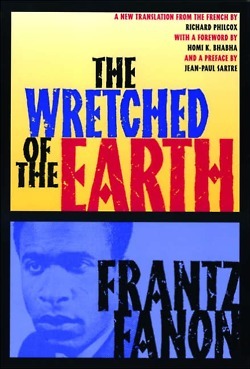
Four books by Frantz Fanon - Downloadable
The Wretched of the Earth. New York: Grove, 2004. Here it is.
Black Skin, White Masks. London: Pluto, 2008. Here it is.
A Dying Colonialism. New York, NY: Grove, 2007. Here it is.
Toward the African Revolution. New York, NY: Grove, 1994. Here it is.
If you haven’t read Fanon, now is the time. The zip file password is: archive.
A cobra is dangerous only when it is coiled, ready to strike in an instant; when its body is completely erect it is quite harmless. Similarly, the kundalini is dangerous only in its form of the diffuse life energies, which fuel the unillumined person's hankering for sensory and sensual experiences, entangling him or her ever more in worldly karma. When the serpent power is erect, however, it is not poisonous but a source of ambrosia, because it is erect only when it has entered the central pathway leading to liberation and bliss. As Jayaratha explains in his commentary on the Tantra-Aloka (chapter 5, p. 358), when one strikes a serpent it draws itself up and becomes stiff like a rod. Similarly, through the process of "churning" the kundalini stretches upward into the perpendicular pathway of the sushumna, reaching with its head for the topmost psychoenergetic center. Georg Feuerstein, Tantra: The Path of Ecstasy, Chapter 11: Awakening the Serpent Power.







